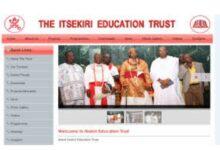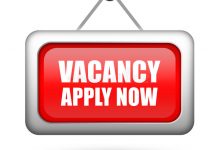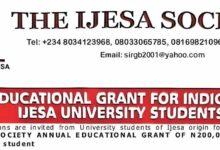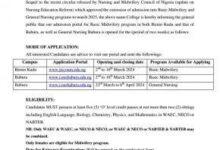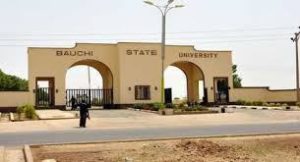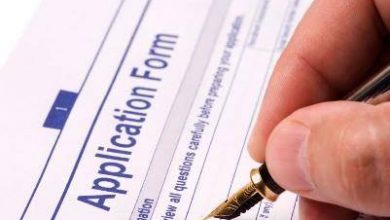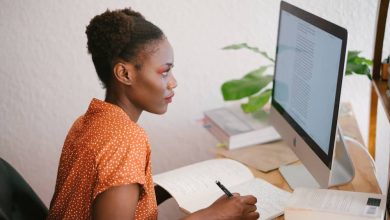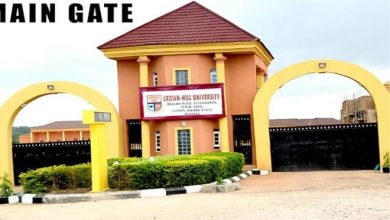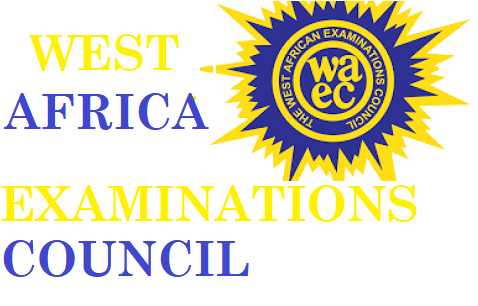
WAEC Syllabus for Picture Making
WAEC Syllabus for Picture Making. WAEC Syllabus for Picture Making is available for all candidates who want to participate in the examination. The West African examination council (WAEC) has officially introduced a syllabus that will guide all the WAEC candidates who wish to write the WAEC examination this year. For a very successful WAEC Picture Making examination for this year, you need to check out the available areas of concentration. It has been divided into sections with chapters, followed by the topics to be covered in preparation for the exams. In the WAEC Syllabus for Picture Making, you will also see the format of how the WAEC Picture Making questions will be presented. Jamb form
There are 3 sections to answer questions from. Paper 1 is Objective and paper 2 contains essay questions and paper 3 is practical. Where paper one (1) carries 50 minutes for 40 marks; paper two (2) carries 2 hours for 60 marks (3) 80 marks for 5 days practicals.
👉 Relocate to Canada Today!
Live, Study and Work in Canada. No Payment is Required! Hurry Now click here to Apply >> Immigrate to Canada
This WAEC syllabus is for both the O’level WAEC and General Certificate Examination (GCE) candidates. Final year students in the senior secondary school level and external candidates are eligible to make use of this syllabus and prepare ahead of the examination. WAEC Syllabus for Picture Making
See the full detailed information concerning the WAEC Picture Making Syllabus below.
PREAMBLE
The teaching syllabus provides students offering Picture Making at the Senior High School level in Ghana, the opportunity to develop their talents and acquire knowledge and skills in all areas of Picture Making such as drawing, painting, decoration, collage, mosaic making, marquetry, printmaking, etc.
AIMS AND OBJECTIVES
The examination syllabus aims at testing the candidates’ knowledge and skill in theory and practical aspects of Picture Making.
The main objectives are:
(i) assessing candidates’ knowledge and competence in the use of local resources in Picture Making for personal development and nation-building.
(ii) testing candidates’ understanding and appreciation of Picture Making.
👉 Relocate to Canada Today!
Live, Study and Work in Canada. No Payment is Required! Hurry Now click here to Apply >> Immigrate to Canada(iii) testing candidates’ knowledge and understanding of the use of the computer as a tool in Picture Making.
(iv) assessing candidates’ awareness of the various career and job opportunities in picture-making.
SCHEME OF EXAMINATION
There will be three papers, Papers 1, 2 and 3 all of which must be taken. Papers 1 and 2 will be composite paper to be taken at one sitting. Npower Recruitment Pounds to Naira
PAPER 1: Will consist of forty multiple-choice objective questions all of which must be answered within 50 minutes for 40 marks.
PAPER 2: Will consist of six essay-type questions. Candidates will be required to answer four questions within 2 hours for 60 marks.
PAPER 3: Will be two practical projects out of which candidates will execute one within five days, working for six hours each of the days. The paper will carry 80 marks.
The questions will be sent to the candidates two weeks before the execution period for candidates to study. Designing of sketches and preparatory notes should also be done within the two weeks prior to the execution of the project.
These will carry 20 marks. The total mark for the paper is therefore 100.
DETAILED SYLLABUS
(1) Picture making as a vocation and its importance
(i) Developing awareness in the world of colour, career opportunities in Picture making e.g. Muralist, illustrators, painters and scapiest,
portraitist, glass stainers, mosaicist and decorators. Jamb Result
(ii) Studying the works of contemporary Ghanaian artists, e.g. the drawings, paintings and murals of great artists like Kofi Antobam (drawing and painting), Prof. Asihene, and Dr. S.K. Amenuke (painting).
(2) Analyses of the social and economic importance of picture making in Ghana.
(3) Basic design and composition in picture making
Definition, planning, principles and components of a composition, types of composition, what to compose and qualities of good composition.
(4) Drawing/illustration
Exploration of tools and materials for drawing, e.g.charcoal sticks, pencil, etc.
Tools and materials: identification, selection, use and maintenance.
Drawing/Illustrations: Types, idea development:
Purpose; observation, recording, expressions and communicating concepts.
The drawings will be based on natural and man-made objects, human beings and their activities, imaginative compositions, the application of the principles of linear and aerial perspective.
Meaning and scope of illustration: definition, types and purpose of illustrations.
(5) Painting
(i) Identification of types of tools and media:- crayon, poster, acylic, tempera, etc.
(ii) The definition and explanation of painting; Dollar to Naira Rate
(iii) Theory of colour; the study and mixture of colour, i.e. the nature of colour on difference surfaces, e.g. tones and colour behavior, colour, psychology, symbolism and their application.
(iv) Painting media and techniques associated with their usage. Exercises on colour, using different media – watercolour,acrylic, oil colour, pastels, crayon and mixed media.
(v) Different styles of painting: abstract, realistic, etc.
(6) Print making
Principles of printmaking: printmaking as an aspect of picture making, e.g. block pyrography, serigraphy, intaglio, etc.
(7) Collages, mosaics, montage, appliqué, marquetry and montages
Definition and explanation, types of collages, mosaics, etc., exploration of tools and materials, planning and processes of execution.
(8) Mural painting, frieze, fresco, panel work
(i) Concepts, scope and general characteristics.
(ii) Style and type of murals, e.g. relief, incised, plain graphic.
(iii) Principle of composition and execution of mural painting.
(iv) Projects on mural paintings using Ghanaian examples.
(9) Body Art
(i) Study of body decoration.
(ii) History and significance of body painting.
(iii) The concept and scope.
(iv) Examples of body decoration in reference to Ghanaian examples. E.g. the dipo custom, exercise in body adornment. Waec Result
(v) Types: scarification, tattooing, coiffure, costume, etc.
(10) Colour
Definition, classification/types, concepts and significance.
(11) History of painting
Scope, concepts/characteristics, exponents and significance/contribution to the development of art.
(12) Entrepreneurial skill in practice
(i) Introduction to marketing.
(ii) Basic concepts in costing, pricing and marketing of artifacts.
(iii) Survey, cost, production, pricing and marketing of art products.
(13) Exhibition, studio, gallery and museum
Planning and mounting of exhibition, importance of exhibition, maintenance and significance of studio, galleries and museums.
(14) Digital painting
Concepts, principles and components of the computer. Computer as a drawing tool using available softwares.
Check and Confirm: How much is Dollar to Naira Pounds to Naira Rate Today
